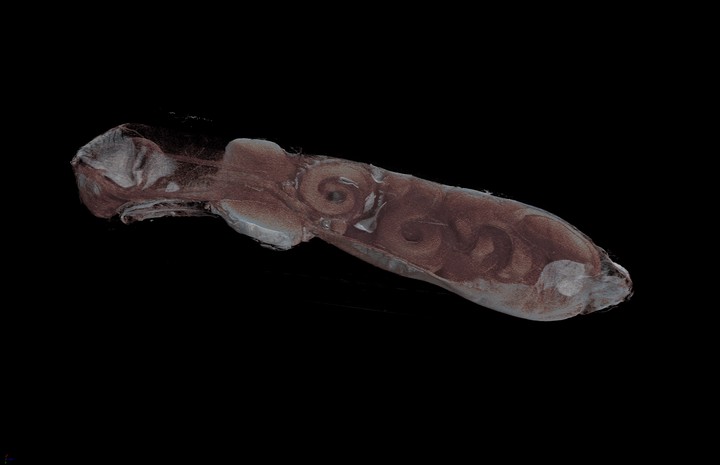A mechanical approach to understanding the impact of the nematode Anguillicoloides crassus on the European eel swimbladder
 Image credit: µ-VIS X-Ray Imaging Centre
Image credit: µ-VIS X-Ray Imaging Centre
Abstract
One of the most detrimental factors in the drastic decline of the European eel (Anguilla anguilla) was the inadvertent introduction of the invasive nematode Anguillicoides crassus. Infection primarily impacts the swimbladder, a gas-filled organ that enables the eel to control its depth in the water. Any reduction in swimbladder function can be fatal for eel undergoing their spawning migration to the Sargasso Sea, a journey of over 5000 km. Although the physiological damage caused by this invasive parasite is well-studied through the use of quantifiable gross pathological indices, providing a good measure of the swimbladder health status, they cannot separate the role of mechanical and biochemical damage. Our study examined the appropriateness of three commonly-used indices as a measure of mechanical damage by performing uniaxial tensile tests on swimbladder specimens obtained from an infected eel population. When the test results were compared to the gross pathological indices it was found that thickness correlated most strongly with mechanical damage, both confirming and, more importantly, explaining the counterintuitive findings of earlier work. In a damaged swimbladder, the immune response leads to a trade-off - increasing wall thickness raises the pressure required for organ rupture but decreases strength. The results indicate that for moderate infection the mechanical integrity of the swimbladder can be maintained. For severe infection, however, a reduction in mechanical integrity may reach a tipping point, impacting the successful completion of their oceanic migration.